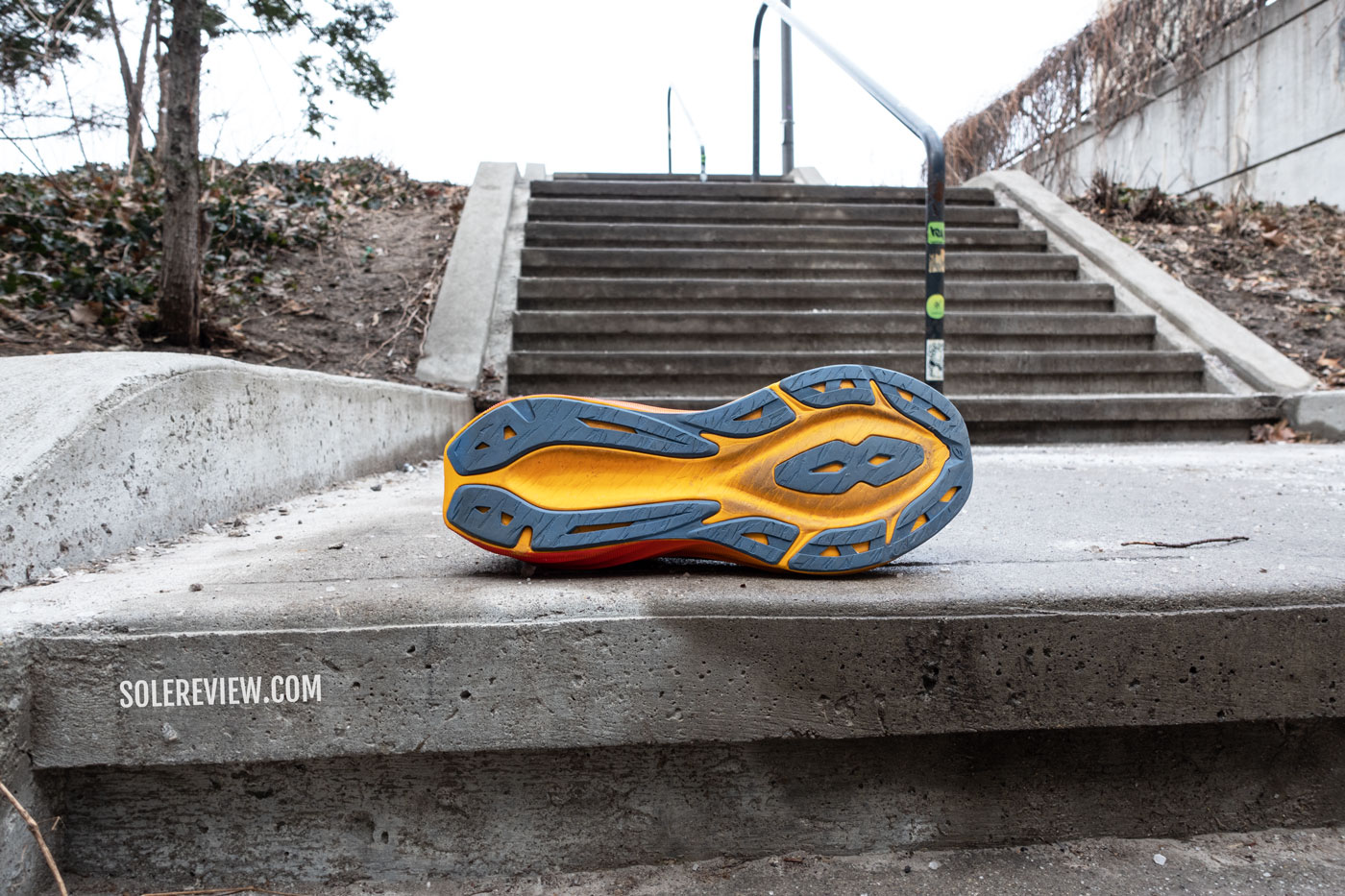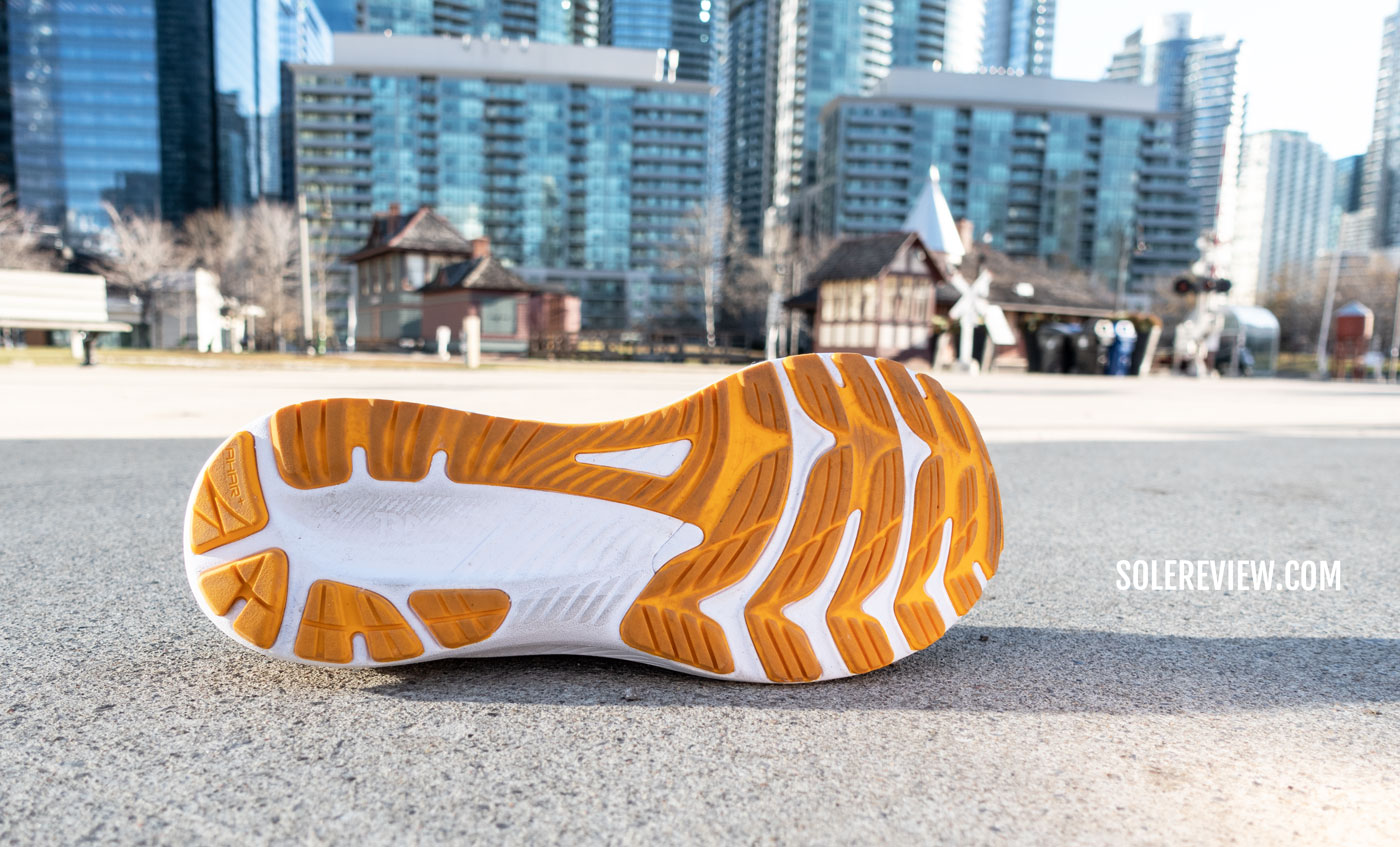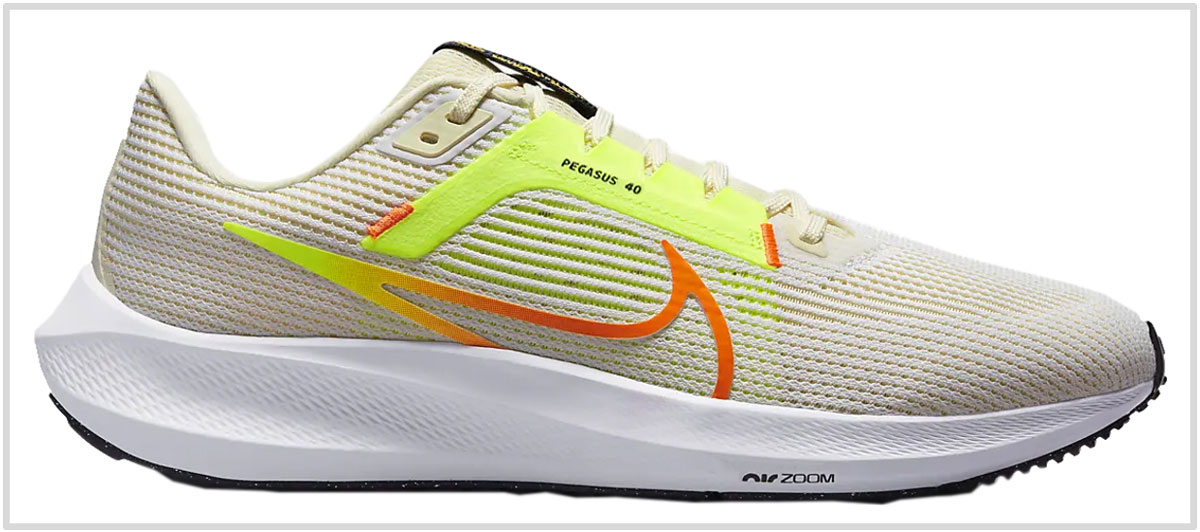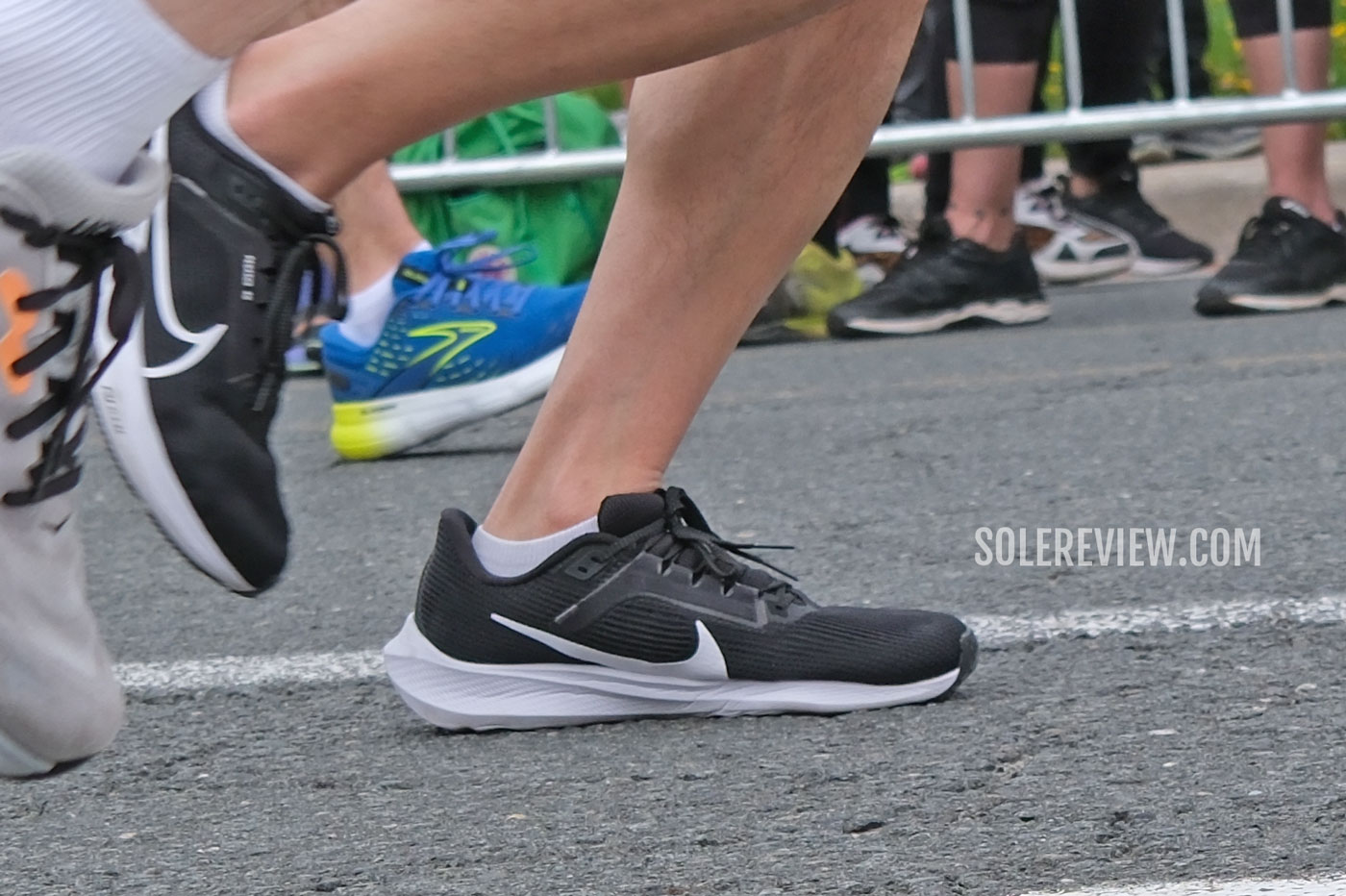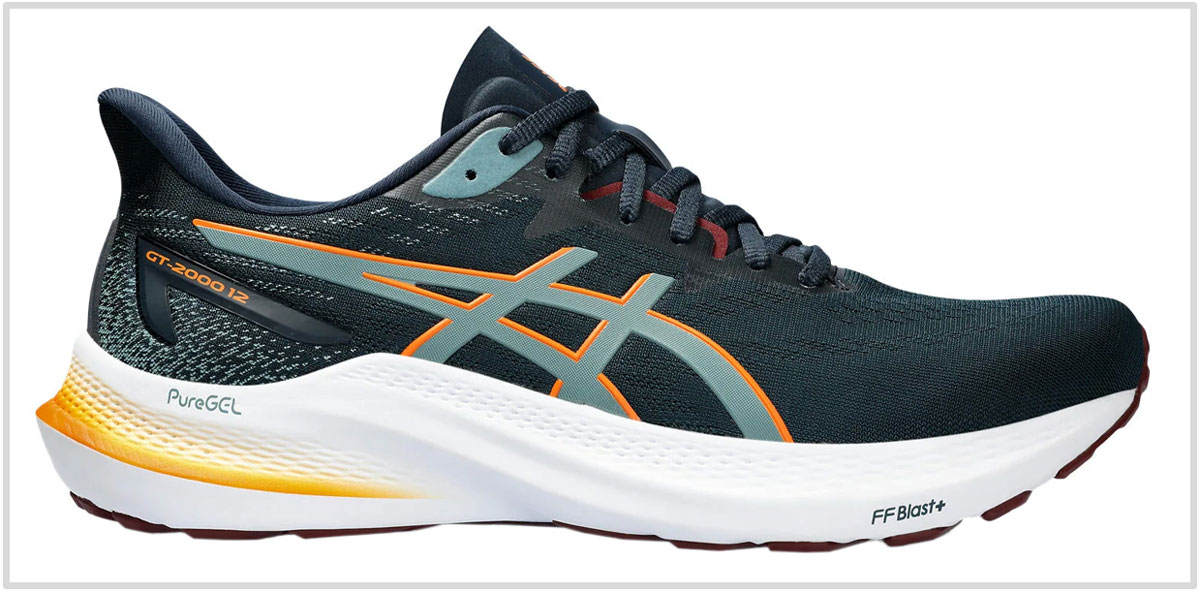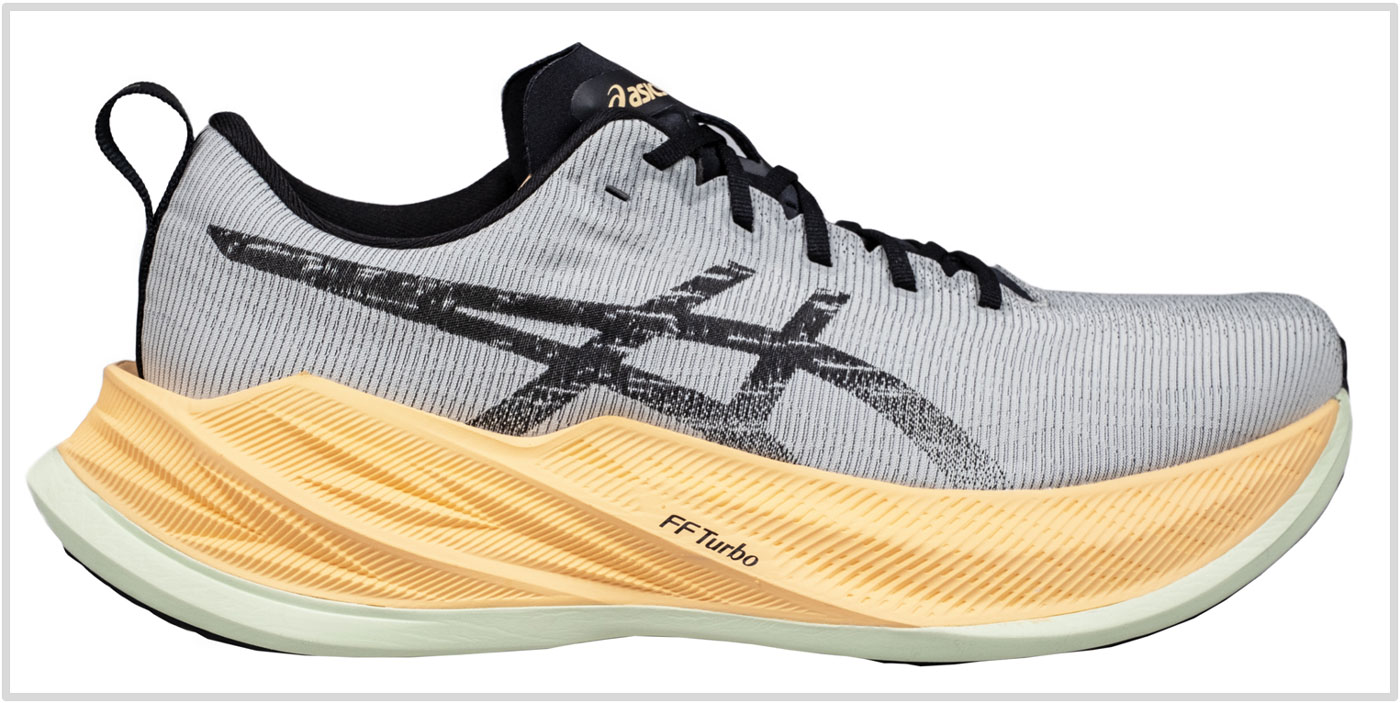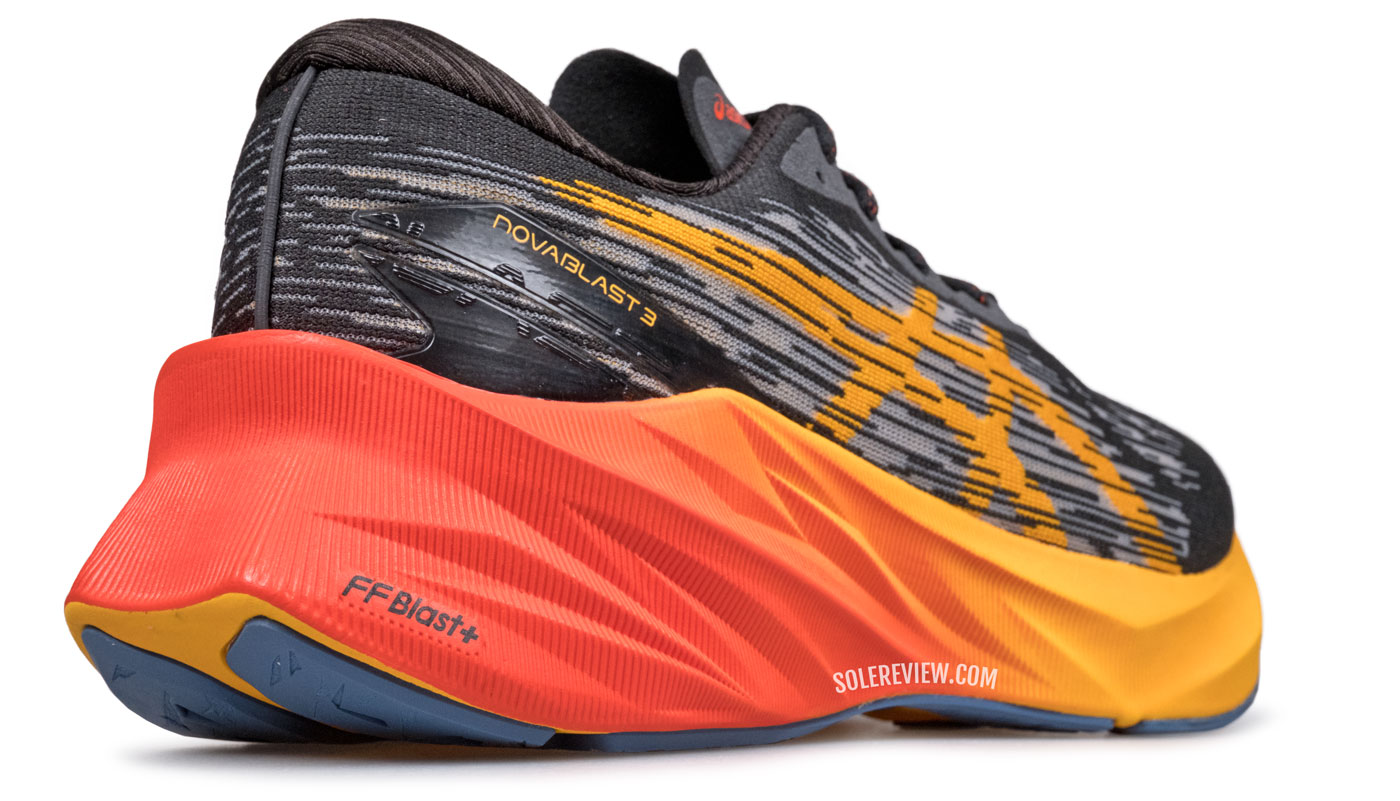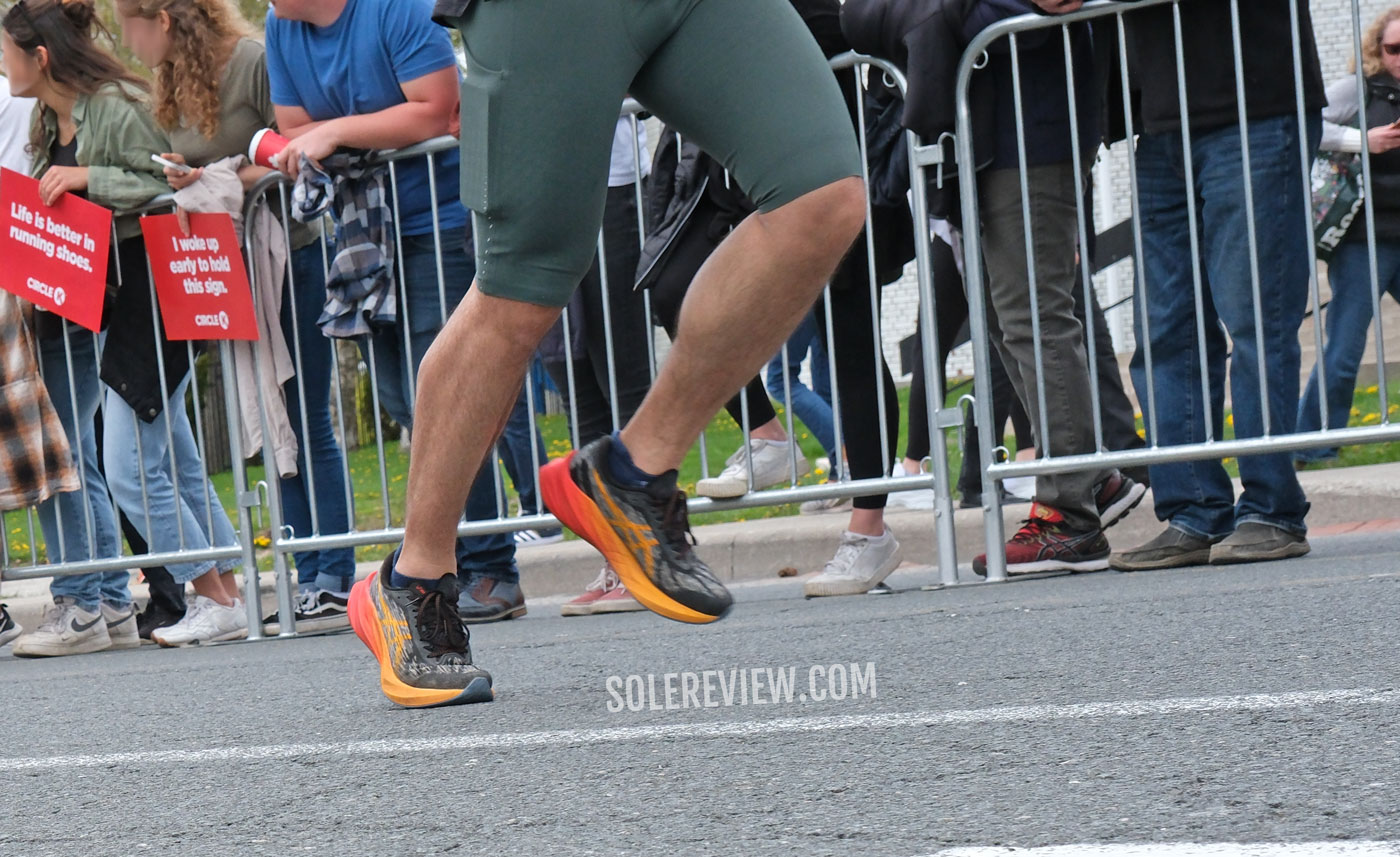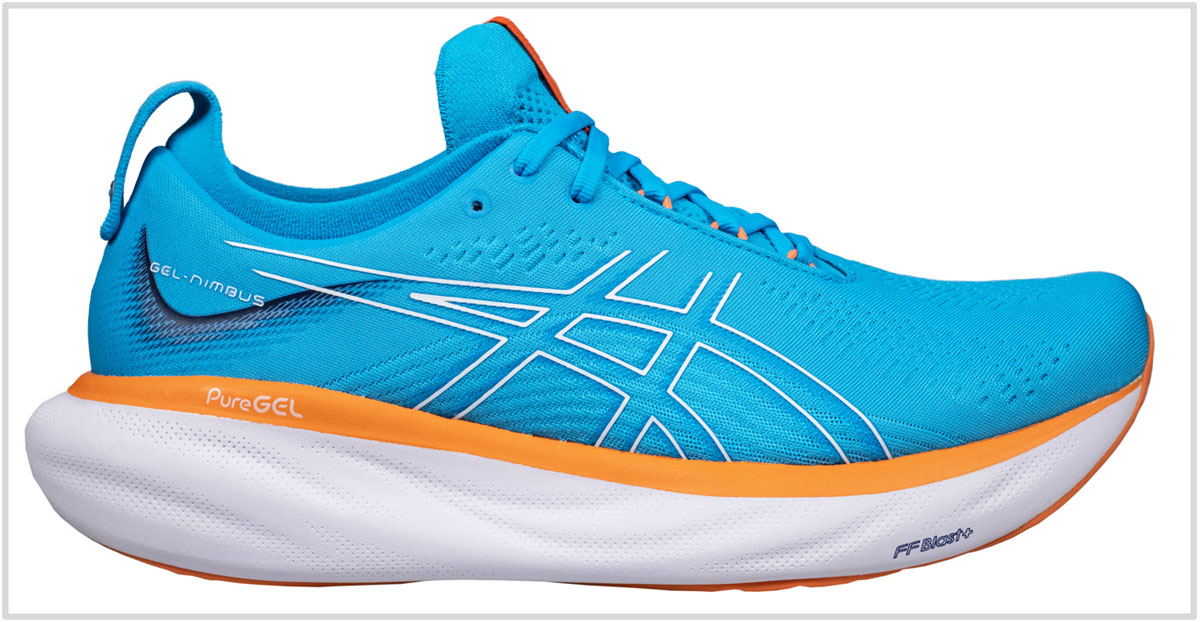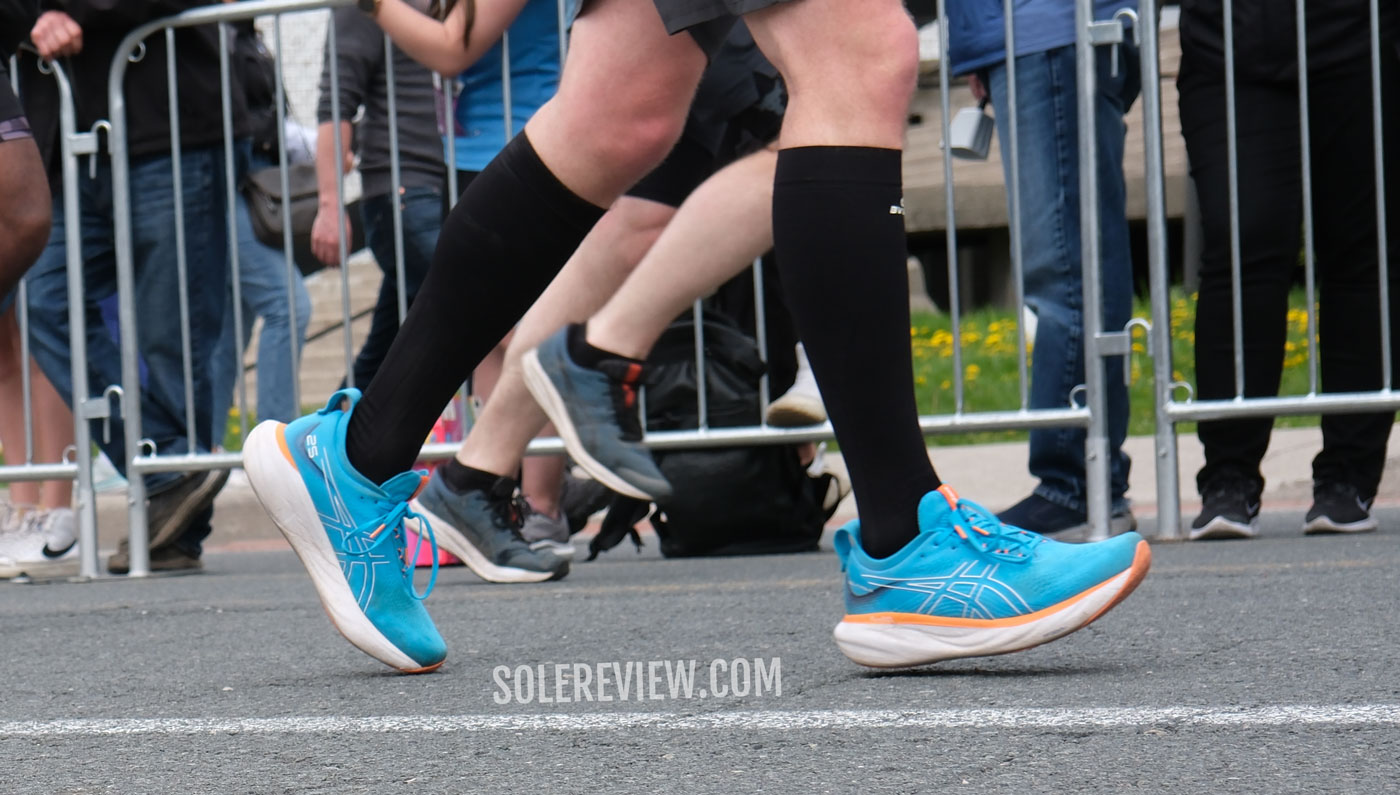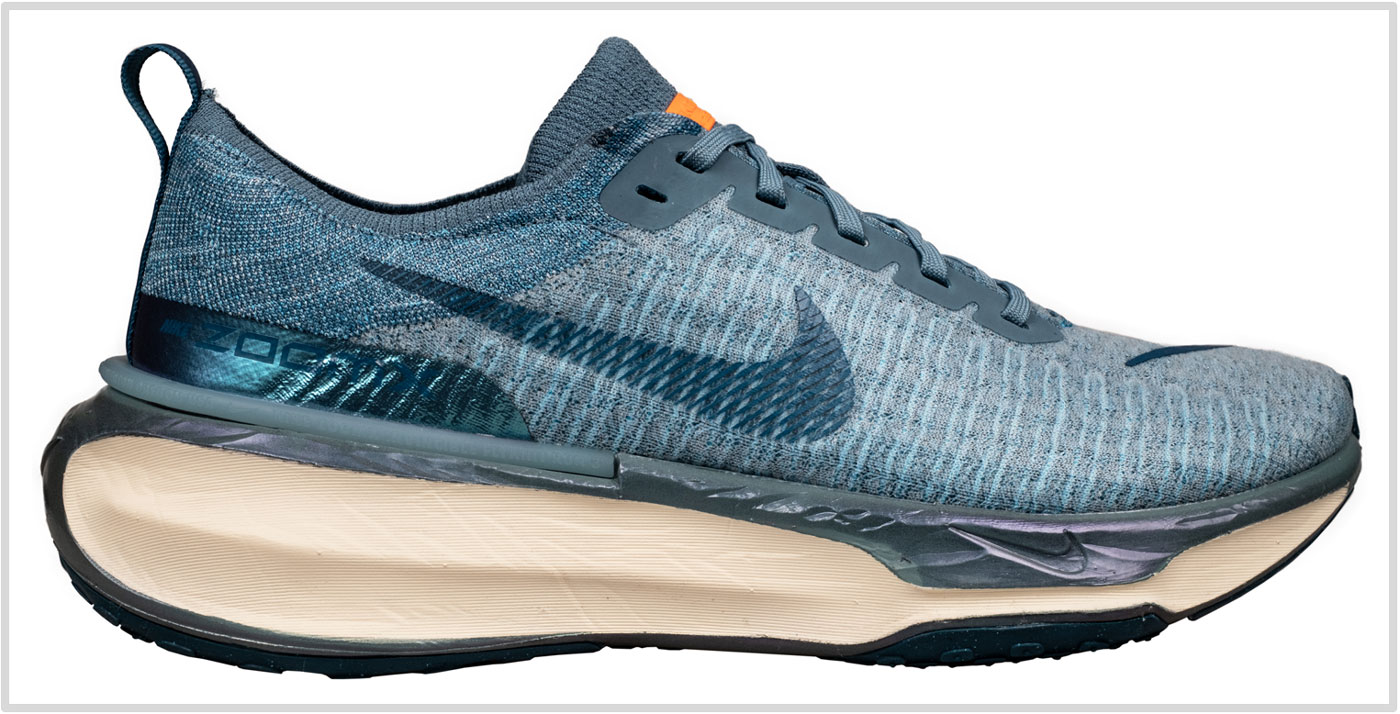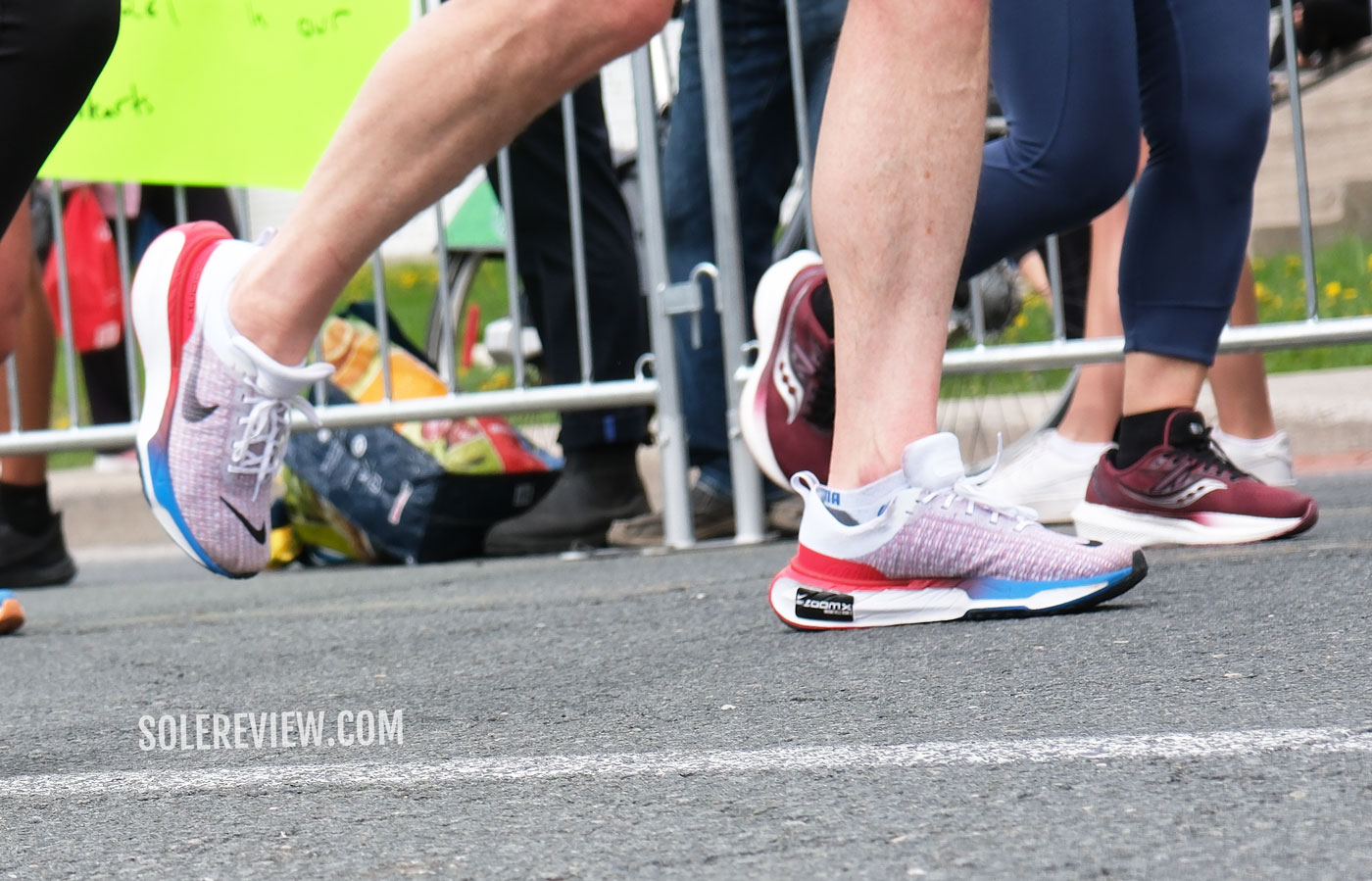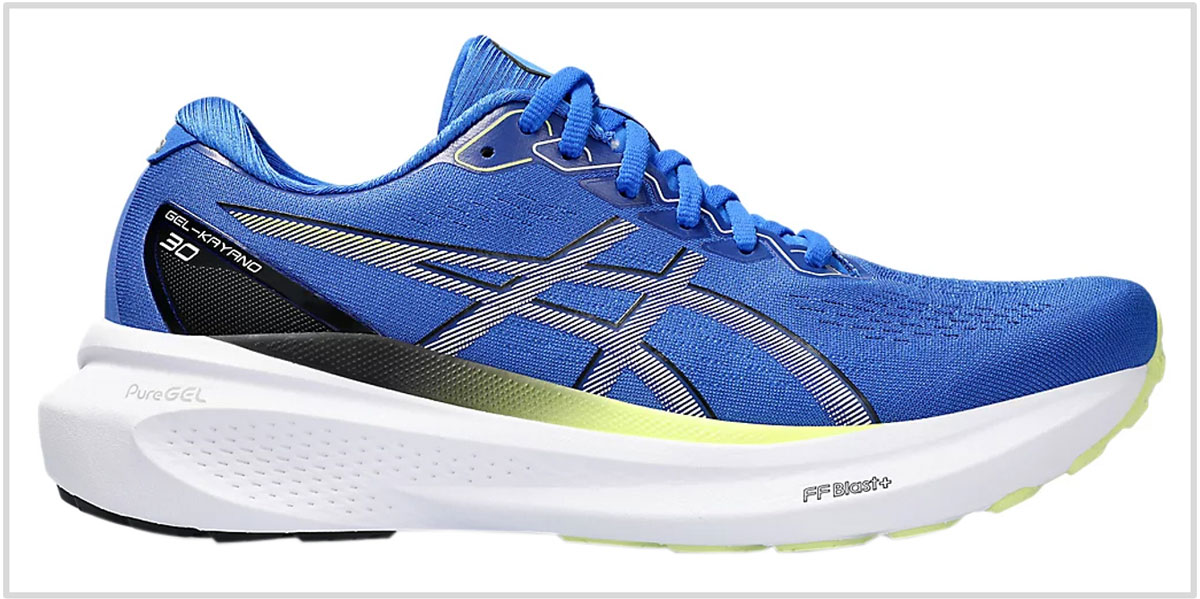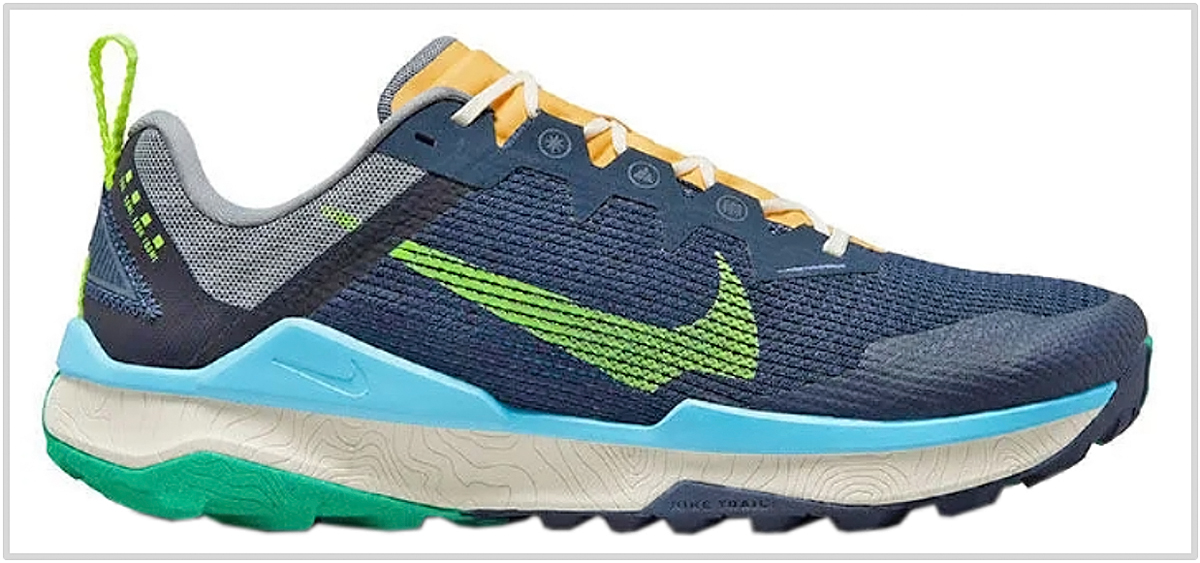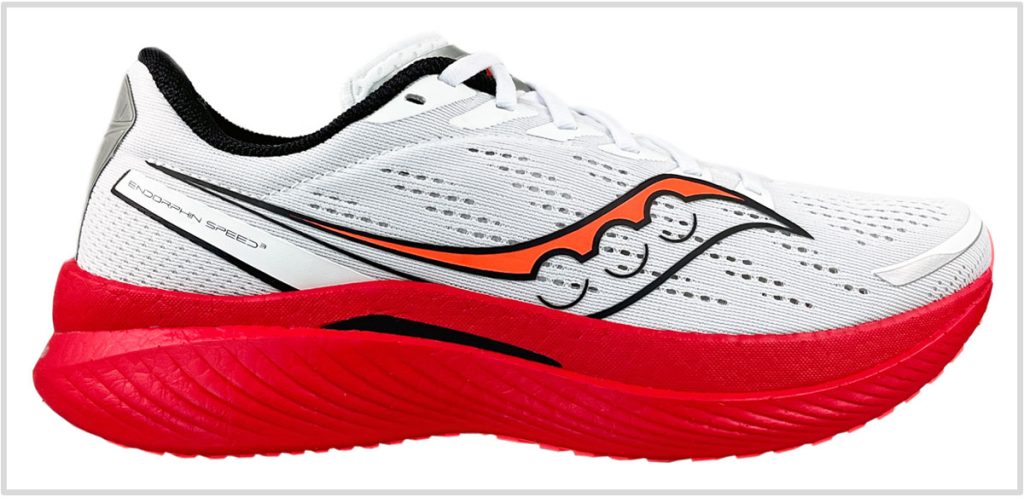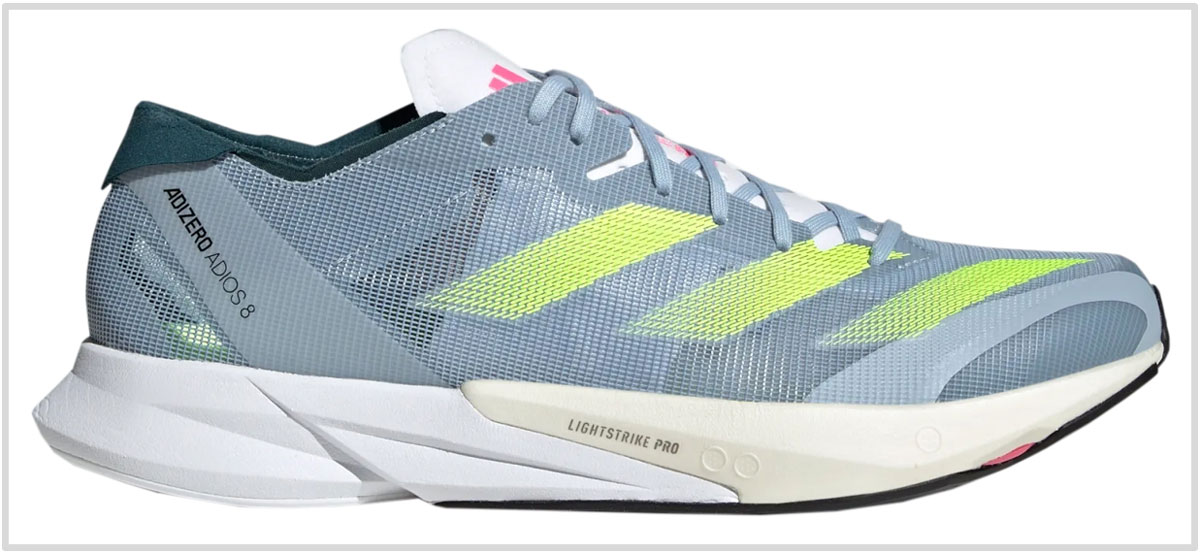This article has been updated with current models for November 2023. The adidas Adios 7, Asics GT-2000 11, Asics Kayano 29, and New Balance Vongo V5 have been replaced with their updated versions. The Asics Cumulus 24 has been removed. The Asics Superblast is a new addition.
In this product guide:
- 1. Factors to consider
- 2. Versatile 10 mm drop trainer for daily runs: Nike Pegasus 40
- 3. Supportive 8 mm drop trainer for daily runs: Asics GT-2000 12
- 4. Everyday 8 mm drop trainer with a soft ride: Asics Superblast
- 5. Cushioned tempo trainer with an 8 mm drop: Asics Novablast V3
- 6. Cushioned 10 mm drop trainer for easy runs: Asics Nimbus 25
- 7. Max-cushioned 9 mm drop trainer for easy runs: Nike Invincible 3
- 8. Cushioned 10 mm drop trainer with a medial post: Asics Kayano 30
- 9. Cushioned 8 mm drop trainer with a medial post: New Balance Vongo V6
- 10. Cushioned trail runner with an 8 mm drop: New Balance Hierro V7
- 11. Cushioned trail runner with an 8 mm drop: Nike Wildhorse 8
- 12. Cushioned marathon racer with an 8 mm drop: Saucony Endorphin Speed V3
- 13. Low-profile racer with an 8 mm drop: adidas adios 8
Also known as the heel-to-toe offset, the ‘drop’ is the difference between the heel and forefoot thickness. For example, if a midsole has an 18 mm thick heel and 10 mm thick forefoot, it would have an 8 mm drop.
Running shoes often go through a cycle of fads. Over 10 years ago, it was the barefoot running boom that popularized the likes of Vibram Five Fingers, Vivo Barefoot, and Nike Free. It also led to the misplaced notion that running shoes with a lower heel-to-toe offset were superior to ‘high drop’ shoes.
Then came the era of maximalist cushioning that led to the growth of Hoka. We’re not out of that phase yet; the max-cushioning has evolved to become the plate-in-a-midsole category that was made popular by the Nike Vaporfly.
Thankfully, the infatuation with heel offsets has waned in recent years, as it should. Many brands have even stopped advertising the heel-to-toe offset number.
Getting fixated on just the ‘offset’ is unhealthy – even if someone is looking for a midfoot strike-friendly shoe.
There’s a lot more involved in what makes a running shoe compatible with forefoot landings. For instance – what does the heel design look like? How wide is the forefoot? Does the upper heel allow the foot to fit flush against the heel? Is there a heel bevel for smooth transitions? Is the outsole a full-contact type?
We wrote a detailed buyer’s guide examining the various factors that make a running shoe suitable for midfoot or full-contact landings.
Based on our experience and reader feedback, a running shoe with an 8 – 10 mm offset is the ideal sweet spot for a variety of reasons:
An 8 mm offset is the perfect middle ground
There’s a reason why most shoe brands produce running shoes with an 8 – 10 mm heel-to-toe offset. Even Saucony, the maker of the 4 mm drop shoe (aka the Kinvara), focuses on running shoes with a higher heel-to-toe offset. For example, the popular Ride 16 and Guide 16 have 8 mm gradients.
On one hand, companies like Altra base their entire catalog on the 0 mm form factor and remain a niche player. Then there are shoes like the Brooks Adrenaline GTS 23 with a 12 mm offset. In that context, an 8 mm offset is neither too high nor overly minimal.
(Related read: The best running shoes with a 4 mm drop)
The Achilles tendon is less likely to experience soreness
A lower ‘drop’ also lowers the position of the heel, thus stretching the Achilles tendon. Though the human foot has a zero mm ‘drop’, most people aren’t accustomed to footwear without a heel.
Therefore, transitioning from a 12 mm drop shoe to 0 mm may require an adjustment period. An 8 mm drop running shoe needs little to no acclimatization.
It works for all experience levels
An 8 mm offset is versatile enough to be used across all running shoe classes.
It’s found in daily trainers like the Asics GT-2000 and Saucony Ride, and also in performance speed-training shoes like the adidas adios 8 and Saucony Endorphin Speed 3. Even trail runners like the New Balance Hierro and Nike Wildhorse have 8 mm drops.
New runners can quickly find comfort in this offset range, and so can experienced runners who are shaking off their winter hibernation. With an 8 -10 mm drop midsole, it’s easy to pick up where you left off.
A higher heel is useful in the gym
Not everybody runs on the road. For many runners, the treadmill is where most of their runs take place. That’s also usually preceded – or followed by – strength training.
A higher heel-to-toe offset moves the center of gravity forward. This is helpful during lifts, where a forward bias is desirable. That’s why training shoes that are designed for strength training have a high drop. We reviewed such a shoe (Nike Metcon 7) on this site.
(Related read: The best running shoes for treadmill runs)
Lastly, running shoes with an 8 mm offset are readily available
Even though many running shoes with 0, 4, 5, and 6 mm offsets exist, it’s way easier to find a running shoe with an 8 – 10 mm drop.
And again – it’s not just about the drop, so an abundance of choices also makes it likely to find the right combination of upper fit, styling, and midsole cushioning levels.
For ease of navigation, we’ve split this guide into five sub-categories – everyday trainers, soft running shoes, stability shoes, trail runners, and speed shoes.
Daily trainers with an 8 to 10 mm heel offset
1) Nike Air Zoom Pegasus 40 (10 mm heel offset)
Except for minor changes to the upper, the Nike Pegasus 40 is almost identical to the Pegasus 39. For 2023, only the upper has changed; the sole hasn’t. Our review of the Pegasus 40 lays out the extent of updates.
The two Zoom Air bags work together with the React midsole to produce a versatile ride quality. The pressurized Air bags help when you need to dial up speed, whereas the softer React foam core adds comfort for high-mileage training. The Pegasus 40 is as close as it gets to the one running shoe that can do it all.
The upper has been improved as well, with a true-to-size fit that’s also secure. The cord-based midfoot lacing changes to a strap-based design; the inner sleeve, and padded heel and tongue keep the foot locked in.
2) Asics GT-2000 12 (8 mm heel offset)
In many ways, the GT-2000 12 feels like a scaled-down version of the Kayano 30.
For as long as we can remember, the fate of both these shoes have been intertwined. And it makes sense, as both shoes are from Asics’ ‘stability’ shoe assortment. Not that it matters anymore, as both the Kayano and GT-2000 no longer have a visible medial post – a firmer foam wedge that claims to reduce inward roll.
The GT-2000 12, like the K-30, uses a neutral and supportive midsole with sufficient ride comfort for daily runs and up to a half marathon. It’s lighter than the Kayano, thus making the GT-2000 more versatile for tempo runs.
However, the outer sidewall has a compression groove, whereas the inner midsole doesn’t. That said, its effect on the overall ride is negligible. The soft Flytefoam cushioning makes the GT-2000 12 a comfortable trainer for most use cases.
And like always, the upper is comfortable, secure, and is available in multiple widths. The GT-2000 12 has a heel-to-toe offset of 8 mm.
Also see: The Saucony Guide 16 (8 mm heel drop) gets you a significantly firmer ride – if that’s what you’re looking for.
3) Asics Superblast (8 mm offset)
Running shoes like the Asics Superblast are a rare breed, because it’s not often that you come across a shoe that truly is capable of everything. Make this your everyday trainer or your race-day shoe; the Superblast can do it all.
There’s a lot of clever design at play here; the lightweight Flytefoam Turbo foam is stacked over a thinner (and firmer) base. Not only does this cut down on the weight, but this midsole also makes the Superblast comfortable yet quick enough for a marathon.
There are other factors too, such as the rocker midsole that keeps the transitions going.
The Superblast is also very user-friendly. The 8 mm midsole requires no learning curve, and in most cases, the shoe is ready to go right out of the box. The snug (and true to size) upper combines ‘fast shoe’ elements like a racer tongue while retaining a padded heel for interior comfort.
4) Asics Novablast 3 (8 mm offset)
The Superblast has upstaged the Novablast, but if you’re looking for a firmer ride, may we recommend the Asics Novablast 3?
It’s a cushioned shoe with a bit of pep, thus making it versatile for daily training as well as tempo runs. Our review of the Novablast 3 explains what makes the shoe tick.
The Flytefoam ‘Blast Plus’ midsole blends ride comfort with speed-friendly responsiveness. Throw in a rocker midsole, and you have a shoe that makes it easier to ‘roll’ forward.
The Novablast 3 also works better as a forefoot striker’s shoe, which only proves that its 8 mm drop is of little consequence.
The single-piece mesh upper fits securely, but with a high level of interior smoothness and comfort.
Also see: The Nike React Infinity 4 ( 9 mm offset).
Soft running shoes with an 8 to 10 mm heel offset
1) Asics Nimbus 25 (8 mm heel-to-toe offset)
For as long as we can remember, the Nimbus has been advertised as the ultimate expression of Asics’s neutral cushioning capabilities. The name – based on a type of cloud – alludes to a soft ride that makes long runs easy on the feet.
The lofty marketing isn’t far from the truth, because that’s what the Nimbus 25 is -thanks to the extensive redesign of Asics’s popular trainer. Our review covered the Nimbus 25 in great depth.
Unlike the Nimbus 24, the 25’s midsole doesn’t have multiple densities of foam, or even a visible Gel unit. The Nimbus 25’s midsole loses 2 mm of heel drop (from 10 mm to 8 mm), but is taller (41.5 mm and 33.5 mm stack) and wider.
The forefoot’s rocker-like behavior wasn’t a part of the Nimbus 24’s ride character.
On the road, the Nimbus continues to be a soft cruiser for everyday runs. However, there’s a marked change in how the cushioning softness is delivered. The extra volume of Flytefoam is noticeable under the foot, and not only is the forefoot more comfortable, but it also does a better job of ‘rolling’ the foot forward.
The knit upper has a plush and padded heel, but with a knit tongue that’s similar to the Nimbus 24. The shoe fits true-to-size and also sells in a wide and extra-wide. This is a very warm shoe due to the low levels of ventilation – something to be mindful of during the summers.
2) Nike Invincible 3 (9 mm heel drop)
If you want the softest and plushest running shoe of all, look no further than the Nike Invincible 3.
The thick and wide midsole is made of 100% ZoomX foam – the same compound that powers the Vaporfly. It’s responsive, lightweight, and extremely comfortable for long-distance runs. It’s fitting that the cushy midsole is matched with a spacious upper and plush interior. If you want to know more, read our detailed review.
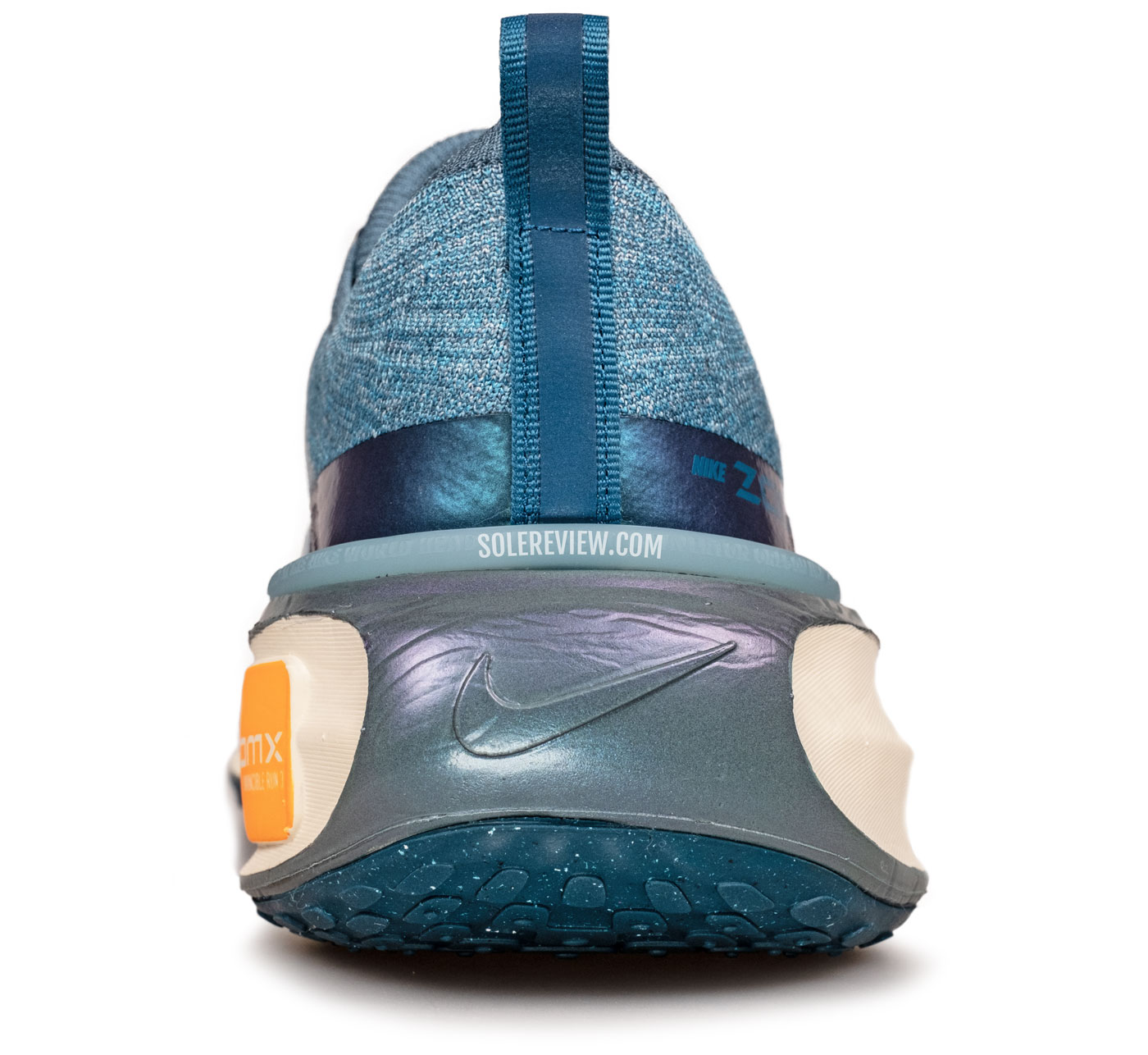
The high-volume ZoomX midsole makes the Invincible 3 extremely comfortable, regardless of the distance.
However, there’s a caveat – the Invincible 3 is best used for easy cruising rather than speed runs.
Even though the shoe has the same ZoomX foam that makes the Vaporfly a fast shoe, there’s no Carbon plate inside the Invincible Run. This is also a very high-volume midsole that adds to the shoe’s 11-ounce weight, so it’s nowhere as agile as Nike’s signature plated racer.

The Invincible 3 gets a fabric lasting covering the midsole – something that the V2 did not have. As a result, the cushioning is firmer.
The Invincible 3 has a couple of changes that make it firmer than the Invincible 2. By adding a lasting fabric over the midsole, the foot no longer has direct access to the ZoomX foam. Secondly, the groove on the midsole sidewalls makes them firmer than the Invincible V1 and V2.
Medial-posted stability shoes with an 8 to 10 mm heel offset
1) Asics Kayano 30 (10 mm heel-to-toe offset)
This had to happen eventually. The Kayano 30 finally lost its medial post – a harder wedge of foam that was supposed to control the inwards roll of the foot. Whether that feature worked at all is debatable, but many runners liked the sensation of support on the arch side.
Well, that’s gone now. In its place is a cushioned trainer with a wide and supportive 10 mm drop midsole. The Kayano 30 feels like an updated version of the Kayano Lite, a shoe that had a brief run of three years.
On the road, that design translates into a cushioned ride that excels at daily runs and long-distance training. At the same time, stability features like the hard heel counter and wide base make the Kayano supportive.
The comfortable engineered mesh upper is offered in multiple widths, as well as a reflective ‘Lite-Show’ version.
2) New Balance Fresh Foam Vongo V6 (8 mm heel drop)
Since its first edition, the Fresh Foam Vongo has always been an outlier. It was an outlier in the sense that it did not stick to the conventional formula of a stability trainer – running shoes that are designed to manage your gait.
For example, the first Vongo had a deep groove running down the center of the outsole. This allowed the more supportive side of the midsole (inner/medial side) to be more effective. The only exception was the Vongo V5 – a running shoe that used a medial post, just like any lazily-designed stability trainer.
But that was last year. The Vongo V6 does something novel. While you can’t see it from the outside, the soft dual-density midsole hides a stiff plate. The said plate has a large windows (or holes) on the outer side, whereas the inner half (when viewed longitudinally) is solid.
This unique construction makes the inner midsole more supportive than the outer side. Meaning, when loaded, the midsole is easier to compress on the outer side, thus giving the Vongo V6 a noticeable cushioning bias.
Other than that, the Vongo V6 is a comfortable do-it-all trainer. The reformulated Fresh Foam midsole and articulated outsole work together to make it the softest Vongo ever, a trend that we’ve also seen on the redesigned 1080V13.
Trail running shoes with an 8 to 10 mm heel offset
1) New Balance Fresh Foam Hierro V7 (8 mm heel drop)
The 8 mm drop Fresh Foam Hierro V7 is a road-trail hybrid with plenty of ride and upper comfort.
The Fresh Foam midsole makes high-mileage trail runs less gruelling; the Vibram outsole is grippy and protective over non-technical trails. The flat lug geometry makes it equally suitable for gravel paths and road sections.
The mesh upper has a closed-knit structure and fused toe-bumper to keep the debris out.
Also see: Nike Pegasus Trail 4 (9.5 mm heel drop).
2) Nike Wildhorse 8 (8 mm offset)
The Nike Wildhorse 8 is a versatile trail running shoe with decent off-road capabilities. The React foam midsole, a segmented heel plate, and an aggressively-lugged outsole create a cushioned yet protective ride.
The ventilated upper has a sleeved tongue that helps keep the debris out.
The Wildhorse 8’s redesigned midsole is nowhere as soft as the Wildhorse 7, and that enhances its everyday versatility – both from a terrain and speed standpoint. The higher level of stability means that you can take the Wildhorse 8 on trails that the Wildhorse 7 wasn’t a good fit for.
And why not the Terra Kiger 9? That’s because it’s got a lower heel-to-toe offset of 4.5 mm.
Speed-friendly running shoes with an 8 to 10 mm heel offset
1) Saucony Endorphin Speed V3 (8 mm heel drop)
The Saucony Endorphin Speed 3 isn’t just any running shoe with an 8 mm heel offset.
The lightweight PEBA midsole (8.1 oz/229 gms) is perfect for high-mileage runs, and the Nylon plate keeps things snappy. The spring-like action under the heel and the rocker forefoot make the Endorphin comfortable yet fast at the same time. Our comprehensive review dives deep into the Speed 3’s ride character.

This time, the PEBAX foam midsole gives us a glimpse of the embedded Nylon plate.
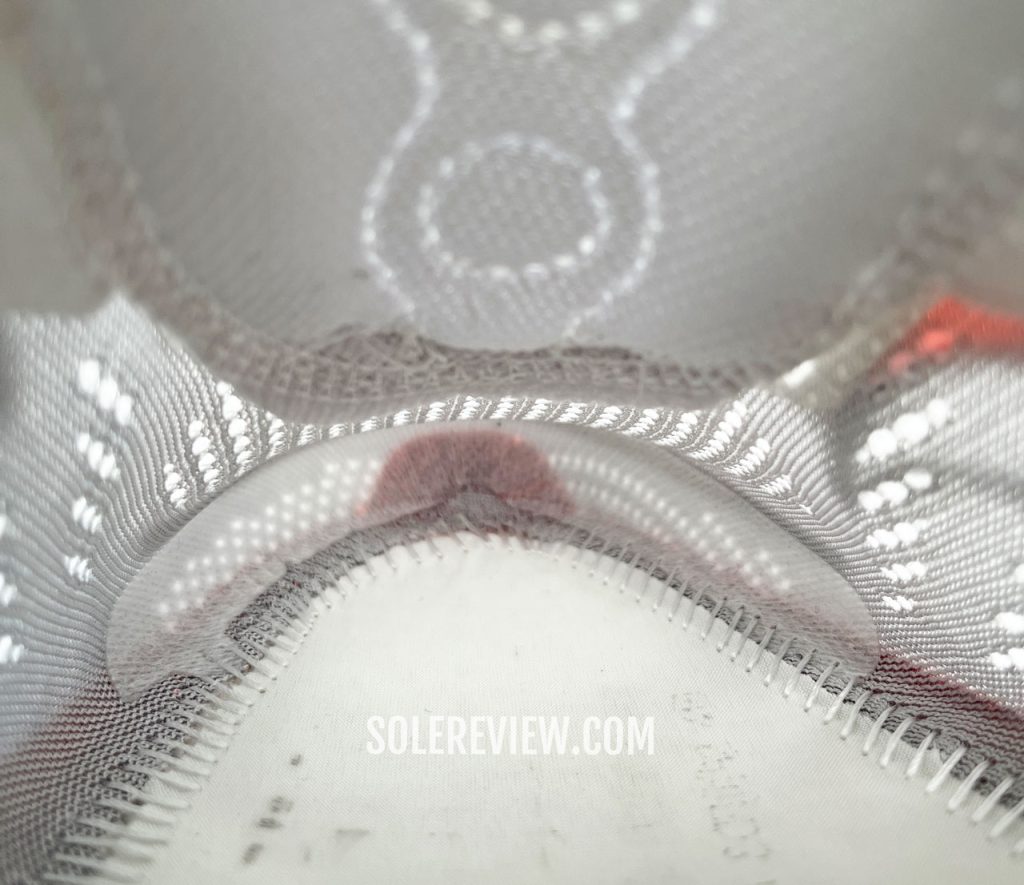
The Saucony Endorphin Speed 3 excels at air circulation.
Most Saucony uppers are very comfortable, and the Endorphin Speed is no exception. The soft and breathable mesh shell breathes extremely well while securing the foot over the midsole.
2) adidas adizero adios 8 (8 mm heel drop)
The adios 8 is a forefoot strike-friendly racer with an 8 mm heel drop. The Continental rubber outsole provides plenty of traction and stability for forward landings and transitions. Here’s our full review to find out more.
While the adios 8 has been completely redone, it continues to be a speed-friendly shoe for races and tempo runs alike. A combination midsole (Lightstrike Pro and Lightstrike EVA foam) infuses cushioning comfort into the low-profile midsole.
This is also the roomiest adios yet. Sure, it’s snug based on any given yardstick, but there’s more room for the toes to splay. And just like all the previous adios models, the lightweight upper breathes very well.
Do you own any of these shoes? Improve this review by sharing your insights – submit a review here.


